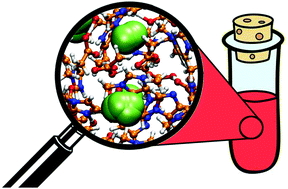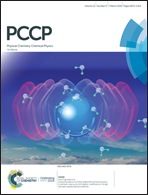Understanding the fluidity of condensed phase systems in terms of voids—novel algorithm, implementation and application
Abstract
Solvation processes, transport properties, and fluidity of condensed phases can be described considering the void space between the particles of the system. In this work a novel algorithm for the analysis of this void in molecular dynamics simulations is presented. Based on suitable void spheres which are fitted between the atoms a void domain is defined employing a Voronoi tessellation scheme. The algorithm is not only providing the distribution of the void sphere's radii, but also contains extensions to analyses details of the static structure and the dynamical behavior of the void space. The first extension is realized by recalculating the void domain neglecting void spheres of a certain size, the second by calculating autocorrelation functions of the probability to find certain grid-based points as part of the void domains. Furthermore, the performance of the new analyses is demonstrated on two suitable case studies. Thereby, the proper functionality of the new algorithm is shown by comparing the void radii distribution obtained by the new algorithm to results from the literature. The further analyses applying the extensions show a crucial influence of the density during the simulation, especially on the dynamical behavior.



 Please wait while we load your content...
Please wait while we load your content...